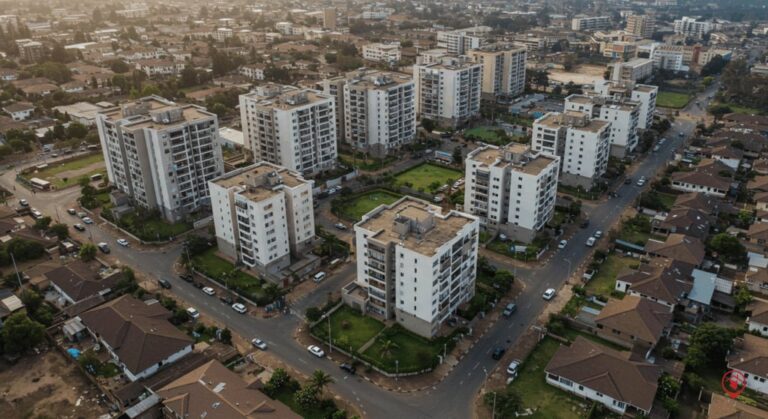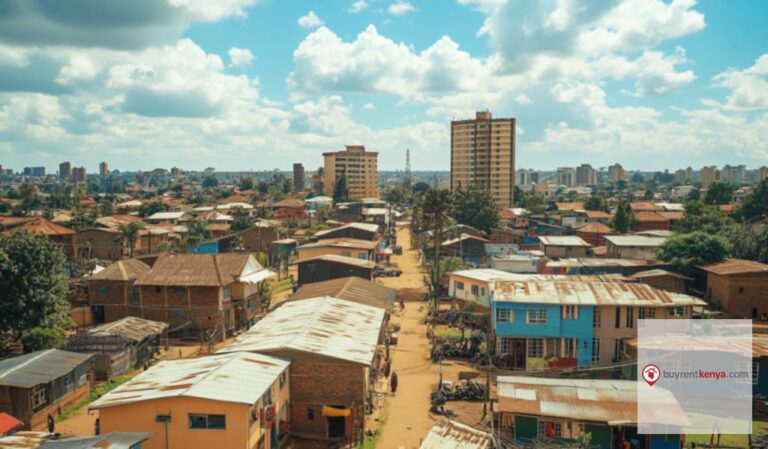Is the One Million Housing Units Target by 2027 Realistic?
- The one million target sounds noble, even necessary, considering Kenya’s growing urban population and rising demand for decent housing.
- While the affordable housing agenda is gaining momentum, it has not been without pushback — especially from communities directly affected by the developments.
- For most Kenyans, the hope isn’t in a headline figure, it’s in finally having a place to call home, where the rent isn’t a burden, and the ground doesn’t feel temporary.
About a week ago, President William Ruto, together with the Ministry of Lands, Public Works, Housing and Urban Development, launched newly built houses in Mukuru kwa Njenga , part of the government’s flagship affordable housing program.
What was once a densely populated informal settlement now has towering apartment blocks with social housing and one-, two-, and three-bedroom units. The project, which comprises 1,080 houses, is designed to provide decent homes for lower-income families, homes that are stable, safe, and within financial reach.
But as the national conversation around housing intensifies, one big question keeps coming up: Is the government’s promise of one million housing units by 2027 actually achievable?
READ ALSO: Kenya’s Affordable Housing: Progress and Challenges in 2025
The Big Picture: A Race Against Time
The one million target sounds noble, even necessary, considering Kenya’s growing urban population and rising demand for decent housing. But to meet that goal, the government would need to deliver more than 250,000 units every year and is this really doable? So far, the numbers are modest but while progress has been made in places like Mukuru and Park Road, the total number of completed units is estimated to be under 50,000.
Several other projects are currently underway:
- Shauri Moyo, Starehe, and Bahati estates in Nairobi are all set for redevelopment.
- Kibera Soweto B, one of the oldest informal settlement upgrade programs, is ongoing.
- New sites have also broken ground in Kisumu, Homa Bay, Mombasa, and Eldoret, where affordable housing is being positioned as part of broader urban regeneration plans.
These projects form part of a larger urban transformation vision — but they’re also running into real-world friction.
Lang’ata and Kangemi: Two Flashpoints
While the affordable housing agenda is gaining momentum, it has not been without pushback — especially from communities directly affected by the developments. Two recent cases in Lang’ata and Kangemi have brought the program’s social and ethical dimensions into sharp focus.
In Lang’ata, residents have raised alarm over a Sh25 billion housing project set to occupy a 37-acre piece of land along the Southern Bypass. The proposed high-rise blocks, some expected to reach 17 floors, are being built on land that was previously designated for public utilities and recreational facilities.
According to Fred Kimathi, chairman of the Lang’ata Residents Association:
“We just discovered an upcoming project being carried out without any public participation, which is a constitutional right. As residents of Lang’ata, we were not consulted.”
Locals are calling the development blatant land grabbing, and their concerns have now cast a shadow over the project’s legitimacy, further fuelling public skepticism about the program’s transparency and long-term vision.
Meanwhile in Kangemi, a different battle is unfolding. Here, residents have moved to court to block their eviction from land earmarked for affordable housing. For many, the eviction notices came suddenly, without clear plans for compensation or relocation. The fear is that development is being prioritised over people, especially those who have called these neighbourhoods home for decades.
Together, Lang’ata and Kangemi underscore a critical tension:
Can Kenya build for the future without disregarding the rights of the present?
Until that question is answered through inclusive planning, open dialogue, and equitable processes, resistance will remain a key part of the housing conversation.
Other Major Hurdles
- Serviced Land Shortage: Acquiring land with roads, water, and sewer connections remains a slow and costly process.
- Affordability Gap: Even at a subsidised rate, many low-income families still find the homes out of reach — with monthly repayments competing against food, transport, and school fees.
- Regulatory Delays: Coordination between national and county governments is inconsistent, and bureaucratic bottlenecks continue to delay approvals and disbursements.
Silver Linings and Moving Parts
Despite these challenges, the affordable housing program isn’t without momentum. The government is engaging private developers through Public-Private Partnerships (PPPs), which could ease funding and fast-track construction. Technologies like prefab units and 3D printing are being explored to reduce costs and timelines.
In some areas like Mukuru and Park Road, we’re already seeing real shifts, not just in buildings, but in how communities are being structured with schools, clinics, and small businesses in mind. If scaled properly, this model could help reshape urban Kenya for the better.
So, Is One Million Doable?
Truthfully? Unlikely within the set timeframe, at least at the current pace. But the real impact of this program might not lie in hitting a numeric target.
If the government can deliver hundreds of thousands of quality, fairly allocated units, avoid unnecessary displacement, and rebuild public trust through transparency, then the effort will still be transformative.
Because for most Kenyans, the hope isn’t in a headline figure, it’s in finally having a place to call home, where the rent isn’t a burden, and the ground doesn’t feel temporary.








